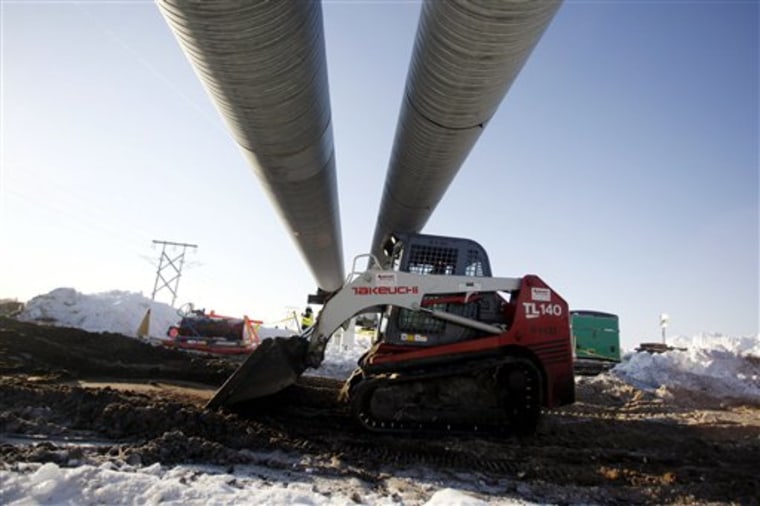BP Exploration Alaska Inc. is reviewing a federal order that calls for sweeping changes in response to the record crude oil spill on Alaska's North Slope, a company spokesman said Tuesday.
Among problems noted in the corrective order from the Pipeline and Hazardous Materials Safety Administration was the "ineffectiveness of the leak detection system to identify the leak" in the Prudhoe Bay transit line.
The five-page document also noted that a post-spill inspection of the 30-year-old pipeline found several flaws, including an area of the 0.375-inch wall worn ultra thin by internal corrosion.
Officials believe crude was leaking for at least five days from a small corrosion hole in the line before the spill was discovered March 2 by a worker who smelled the oil.
Crews are cleaning up the two-acre spill, which is estimated at up to 267,000 gallons. Slowed by bitter cold weather, they have recovered 63,546 gallons — or 1,513 barrels — of crude.
Three-month deadline
The pipeline safety agency, part of the U.S. Department of Transportation, said BP must review the leak detection system on the affected line as well as two other crude transit pipelines in Prudhoe, 250 miles north of the Arctic Circle.
The company must make necessary modifications within three months.
BP officials are studying their options on how to proceed, according to company spokesman Daren Beaudo.
"We haven't decided on what action, if any, to take," he said.
The company has until the end of the week to request a hearing on the matter, said James Wiggins, a spokesman for the federal agency.
"It's part of the process available to them," he said. "We've got good reasons for requiring certain things. The pipeline failed."
Six anomalies found after spill
The order also calls for repairs of six anomalies found in the line after the spill was discovered. The worst flaw was a spot where the wall thickness had worn down to 0.04 of an inch.
Among other measures, BP must run maintenance pigs — electronic equipment put through a pipe to check wall conditions — on the three lines. Since the spill, critics have slammed BP for last running a pig through the ruptured line in 1998.
Officials with the Alaska Department of Conservation said the spill will lead to fines against BP and possibly stricter regulations for such transit lines, which have been subject to little government scrutiny in the past.
The federal agency did not address what BP suspects as a significant factor in the rapid corrosion first found last fall inside the thick arctic-grade carbon-steel pipe, which leads eventually to the Trans Alaska Pipeline.
Beaudo said the corrosion may be related to the fact the pipeline is increasingly carrying viscous oil, a hard-to-pump heavy crude being tapped as the oil field is drawn down. Separation chemicals used on viscous oil may interfere with corrosion-inhibiting additives that are put in the pipeline, Beaudo said.
BP feels spill is 'unique'
"What we believed happened to this line is unique," he said, adding that corrosion inhibitors will now be injected directly into the line once it resumes production.
Under the federal order, BP must submit a corrosion management plan for this line and two other transit lines, which only carry crude and not viscous.
The company already runs an unparalleled job of staying on top of corrosion, said Larry Dietrick, director of spill prevention and response for the state environmental conservation department. This year, BP's corrosion inspection budget for the North Slope is $71 million, up from $50 million spent in 2004.
But any input from the federal pipeline agency is welcome, he said, if it leads to a better system following the largest crude spill ever on the North Slope.
The real issue is to properly identify the cause and properly get a fix on this so it doesn't happen again," he said.
